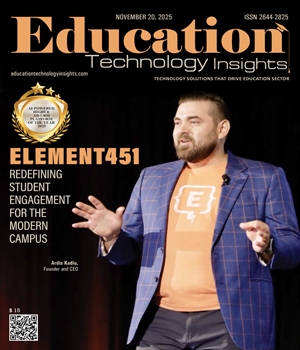THANK YOU FOR SUBSCRIBING
Be first to read the latest tech news, Industry Leader's Insights, and CIO interviews of medium and large enterprises exclusively from Education Technology Insights
Now Is the Time for Workflow Learning and Performance Support
Seth Martinez, PhD, Director, Learning Strategy Lab at Boise State University
 Seth Martinez, PhD, Director, Learning Strategy Lab at Boise State University
Seth Martinez, PhD, Director, Learning Strategy Lab at Boise State UniversityFrom the end of 2022 through spring 2023,the Learning Strategy Lab from Boise State University conducted research on the prevalence of various learning technological tools. This included both the current and future uses of such tools. The team discovered a persistent theme: the time for organizations of all kinds to emphasize learning in the flow of one’s work—and thereby receive performance support—is now. The research team interviewed nearly two dozen leaders of learning, and supplemented the interviews with reviews of the annual industry reports of Red Thread Research, LinkedIn Learning, McKinsey & Company, Bain & Company, and Industry Magazine. Upon analyzing all data, the research team observed three trends: (1) the stark reality of the new (i.e. remote) modern workplace as a result of the COVID pandemic; (2) increasingly nuanced and evolving tasks required of employees; and (3) the organization’s heightened responsibility to address those dual needs and to do so at scale. The research team further concluded that the optimal manner to address this threefold challenge converges around strong performance support.
Workflow Learning & Performance Support Today
There currently exists diversity in conceptualizations of the terms workflow learning and performance support (WL/PS). That is, depending on the individual interviewed or industry report reviewed, it was highly probable that we receivedsignificantly different answers to the question of how the two terms were understood. Some considered WL/PS to be no more than checklists, procedures, examples, and flowcharts. Others communicated a more nuanced understanding, sharing that WL/PS was truly any learning resource that assisted the performer in their duty or task, regardless of it being analog or electronic (e.g., a company wiki or discussion forum). The truth is, however, that WL/PS includes all of these.
Additionally, some learning and development professionals considered WL/PS to be highly relevant and germane to their work, while others reported a sentiment of, ‘WL/PS is for the employees to manage themselves; our job is to focus on the formal training experiences.’ Ultimately, the disconnectwas clear.
Workflow Learning & Performance Support Going Forward
For organizations to successfully adapt to the changing environment while simultaneously responding to their employees’ ever-changing needs, the learning strategy lab team concluded that now is the time to emphasize WL/PS. Why? Because not every employee's or students’ performance needs require formal training. This could be because more people are working or studying remotely and it would be a logistical nightmare to try solving their needs using a formal training approach. Further, if two employees or students on the same team are working on similar tasks, but one is significantly more astute than the other, would it be efficient or effective to require the more proficient employee to sit through the same training as the lesser? Of course not. The culmination of these tensions points toward a single solution, onewhich is needed now more than ever: a strong workflow learning strategy and performance support system. And how might this be accomplished?
For starters, in an ideal scenario the learning involved shifts from ‘how to perform a workplace task’ to ‘how to use performance support to complete the same workplace task.’ Second, the data are clear that leadership support and an organizational culture that is committed to learning are critical to the success of WL/PS. Additionally, a strong WL/PS solution requires a knowledge management strategy to keep any information behind the performance support tool current.
If organizations want to succeed in supporting and amplifying the performance of their employees in 2023 and beyond, it is imperative that they develop a sound strategy around learning within the flow of work and an accompanying performance support system to match. The data are clear. The industry has spoken. The time is now.
Read Also
Goldilocks Regulation
Beyond the Quiz: Redefining Competence in eLearning
Beyond Theory and Into Monday Morning: Enhancing Graduate Programs for Teachers
Safeguarding Students in the Age of Deepfakes: An Educational Imperative
Delivering Excellence in Education through Transformative School Leadership
Curriculum Innovation for Student Success and Institutional Growth

I agree We use cookies on this website to enhance your user experience. By clicking any link on this page you are giving your consent for us to set cookies. More info





















